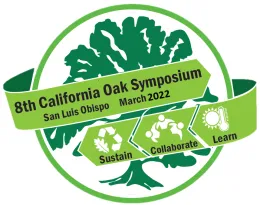#19

Background Total Suspended Solids and Turbidity Conditions in Oak Woodland Headwater Streams
David J. Lewis, University of California Cooperative Extension Marin County
Anna Dirkse, University of California Cooperative Extension Marin County, Anthony O’Geen, University of California Davis, Kenneth W. Tate, University of California Davis, Safeeq Kahn, University of California, Merced
Oak woodlands are a primary source of surface water in California with more than 75% of the surface flows originating from or flowing across them. This water is critical for multiple uses, including agriculture, residential, and environmental, among others throughout the Central Valley and along California’s coast. The provisioning of water for these beneficial uses is predicated on water of sufficient quality to meet these needs.
Background concentrations of water quality constituents, like Total Suspended Solids (TSS) or Turbidity, are influenced by multiple factors including precipitation timing and intensity, underlying geology and soils, and land use. Using eight years of water quality sampling and analysis from four experimental watersheds, we explore background concentrations for these two constituents and how these factors influence their variability. The four paired, instrumented watersheds are located near Hopland, California two hours north of San Francisco, California. These are first order catchments, representing headwater landscape positions across publicly and privately managed oak woodlands. Two of these watersheds – A and B - were lightly grazed throughout the period of water quality sampling and analysis while the other two – C and D - are in a preserve and have not had grazing livestock on them since the 1950s. Additionally, a low-intensity prescribed burn was conducted in watershed B and C during the study period.
Annual cumulative precipitation during the eight years of study, ranged from 603 mm in water year 2001 to 1437 mm in water year 2006. Mean TSS across the eight years of study was 1,198 mg/L (SD = 432 mg/L), 1,042 mg/L (SD = 235 mg/L), 1,039 mg/L (SD = 351 mg/L), and 945 mg/L (SD = 720 mg/L) for watershed A, B, C, and D respectively. Similarly, mean turbidity was 1,197 mg/L (SD = 121 mg/L), 1,052 (SD = 50 mg/L), 1,050 mg/L (SD = 117 mg/L), and 944 mg/L (SD = 91). Within these summary statistics is the relationship of these constituents to the flashy nature of streamflow generation resulting from individual storm intensity and duration. These dynamics and the resulting variability in water quality are discussed relative to water quality criteria.
